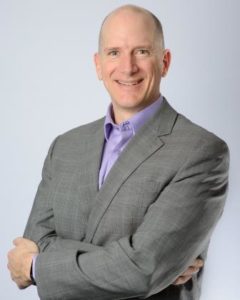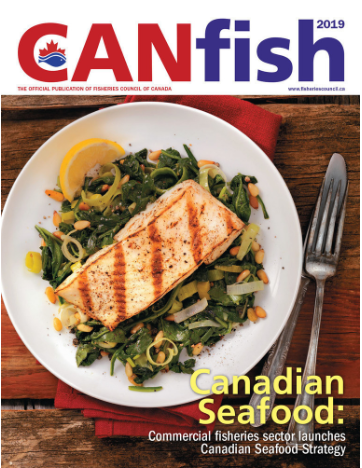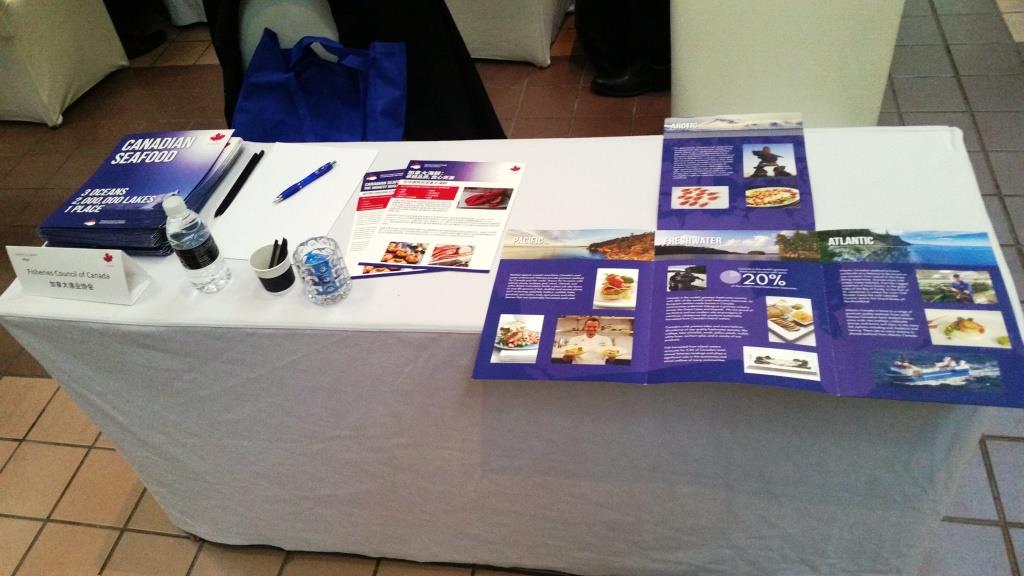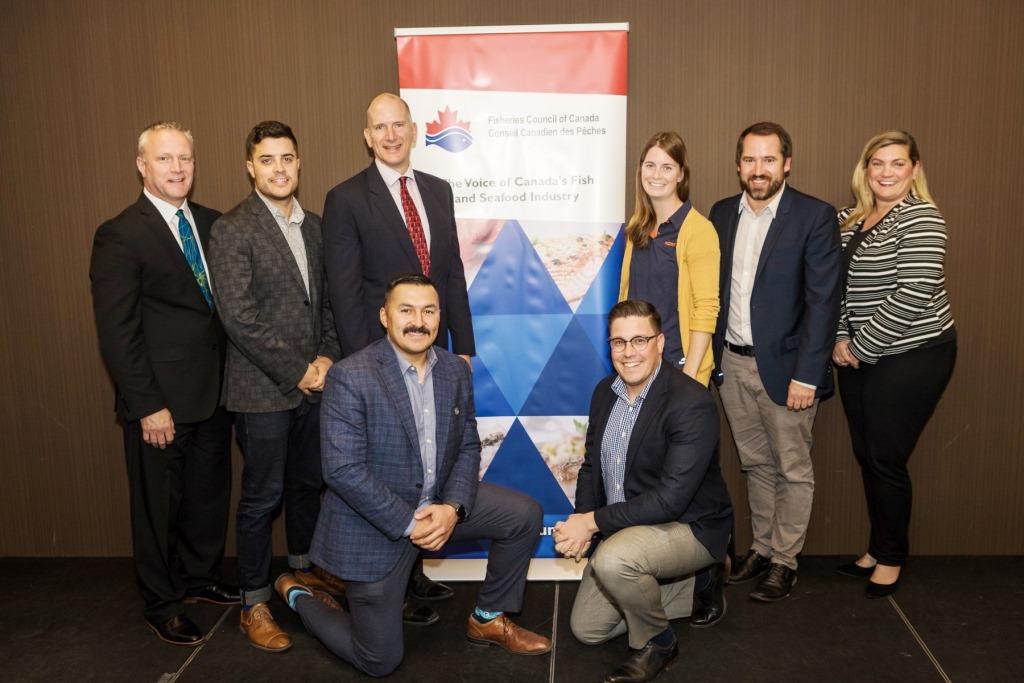Growing a Sustainable Association: Paul Lansbergen, CAE, Fisheries Council of Canada

Paul Lansbergen, CAE anticipated working for the federal government of Canada for his career, but when he saw the public policy work associations were doing on Parliament Hill, he knew that was the (already used above) path meant for him. Now the president of the Fisheries Council of Canada, Paul works with a very small staff to make big improvements to the viability and sustainable growth of Canada’s fishing and fishing supply chain industries.
We spoke with Paul about his daily responsibilities, how FCC is promoting member connections on and off the Hill, and where he’d like to see FCC grow during the next five years.
Association Adviser: How did you begin working in associations?
Paul Lansbergen, CAE: First, I came to Ottawa for graduate school with the intention of working for the federal government afterward. I became a legislative assistant for a Member of Parliament on Parliament Hill. I didn’t plan on that, but it was the chance of a lifetime. However, through that job I also saw the work that associations do to influence public policy and advance their industries, and when I had the opportunity to join the Canadian Fertilizer Institute as a manager of communications, I took it.
After three years at CFI, I was lured over to the Forest Products Association of Canada. That’s when I decided that association work was the career path for me. I held numerous roles at FPAC over 15 years there: association secretary and lead director for regulatory affairs, vice president for regulations and partnerships, vice president for strategy, innovation and economics, and acting president & CEO at one point.
I’ve always been interested in public policy. Being able to help individual companies but also relevant sectors by contributing to smart public policy has been rewarding. From my time at FPAC, I set a career goal of leading an association, that’s how I ended up at the Fisheries Council of Canada (FCC). I’ve been in the president role for two years.
AA: What are your responsibilities at Fisheries Council of Canada?
PL: One thing about leading an association is that it’s like a small business. You have small business- related issues you have to manage. That part satisfies my entrepreneurial spirit. Public policy-wise, we deal with a host of issues from fisheries management, to food safety and food policy, environmental issues, trade and tax irritants. The type of regulations that affect our members is on a broad spectrum and managing those issues every day is a little different.
We’re not a sizeable staff. I’m hiring for two new positions right now, and once those positions are on board we’ll have the equivalent of 3.5 staff members. That’s why every day at FCC is different – we don’t have specialized staff. When I was at FPAC, we had 17-25 people on staff, and you could specialize.
We have about 50 member companies, most of which are privately held. We represent processors across the country. Most harvest as well. We have five membership classes to serve the different sizes and purposes of our members to match the many classes of companies that operate in the industry. Plus, we serve organizations along the supply chain – upstream businesses such as processing equipment manufacturers and packaging companies and downstream organizations such as their retail customers.
I’m FCC’s chief spokesperson, so I go to the Hill to meet with members of parliament (MPs) when there are policies we want to promote. When I came onboard with FCC, I was given a mandate to increase the profile of the Council to elected officials in government by meeting with MPs individually or as a group, or appearing before committees. In the last two years, I’ve testified before 10 committees – a high number – because of the amount of legislation pertaining to fisheries and because of a high number of studies related to our sector that have recently come out. Some of the legislation we’ve worked to influence relates to how Canada manages its fisheries to be sustainable. The framework we’re using to gauge economic sustainability and success is changing, and with climate change, the ocean ecosystem is also changing, so we have to adapt. There’s been a lot in play over the last couple of years.
AA: Tell us about the FCC’s efforts to promote fishery sustainability.
 PL: The sector has not been good at telling its story. So in addition to advocacy for better public policy, we’re starting to do more public-facing communications: Our annual magazine, CANfish, used to be a traditional directory of goods and services that profiled our member companies, but we expanded it to a magazine so we could include more content to tell our story. We’ve become more active on social media to engage people connected with fisheries. Last year we developed and launched a national brand for the sector. When I arrived, FCC didn’t have a national brand. There was species and provincial branding, but not everyone in the global marketplace knows those brands belong in Canada. It’s important to have that maple leaf! Last November we launched the Canadian Seafood brand. The Canadian Seafood brochure and messaging is pretty creative. To represent our 3 coastlines (Atlantic, Pacific, and Arctic) and our 2 million freshwater lakes, the brand brochure opens to the left, right, and top, as well as being found online. My policy person (who has since left!) created that. He ran with it; I thought it was great.
PL: The sector has not been good at telling its story. So in addition to advocacy for better public policy, we’re starting to do more public-facing communications: Our annual magazine, CANfish, used to be a traditional directory of goods and services that profiled our member companies, but we expanded it to a magazine so we could include more content to tell our story. We’ve become more active on social media to engage people connected with fisheries. Last year we developed and launched a national brand for the sector. When I arrived, FCC didn’t have a national brand. There was species and provincial branding, but not everyone in the global marketplace knows those brands belong in Canada. It’s important to have that maple leaf! Last November we launched the Canadian Seafood brand. The Canadian Seafood brochure and messaging is pretty creative. To represent our 3 coastlines (Atlantic, Pacific, and Arctic) and our 2 million freshwater lakes, the brand brochure opens to the left, right, and top, as well as being found online. My policy person (who has since left!) created that. He ran with it; I thought it was great.

AA: Do you train members about how to spread and amplify the Canadian Seafood brand?
PL: We don’t train our members on how to aid with branding. We encourage members to promote the brand, and that is an ongoing exercise. However, we launched a career development program for the sector this year called Future Leaders Canada. This three-session program has two goals: to expose people to different parts of the fisheries supply chain that they would otherwise never see, and to expand their personal network of industry individuals and companies. Program participants meet for three sessions over three days. One session in Ottawa focuses on policy. A second session in Chicago focuses on logistical issues in the distribution, retail and food service sectors. The third session was in New Brunswick to teach participants about salmon farming and lobster distribution. Next year, we plan to go to British Columbia to teach about West coast salmon farming and other operations in BC.

Our application period for the 2020 program is now open. Depending on how many people apply, we may set a participant limit because we want to keep it intimate. Seven people participated this year; I’m hoping for 10 or more people this second year. The feedback from this year’s participants was fantastic, and we already have one confirmed applicant for 2020. To be part of the program, participants must be working anywhere in the seafood supply chain and must attend all three sessions.
When we hold the program, we do a lot of social media posts about it and encourage participants to tweet and post about it themselves. We also publish a couple of op-eds on social media and in our communications. We want to create more awareness about the program in the future and create more excitement surrounding working in our industry.
AA: What do you hope to do with FCC over the next five years?
PL: I’ve already started to focus our efforts on a stronger strategic foundation. This process started before I arrived. Members were working on strategic plan but parked it until a new president came. I did make a few changes to the initial plans in discussion with members. Our budgeting is now more strategic. I’m also recruiting more companies to expand our membership base. It can take a bit of relationship building before companies join. I kept in touch with one company for 18 months before their board approved joining FCC. I’m pleased that through some efforts to build our value proposition, I’ve met with and sold some other companies on membership as well. We have three new member companies and more associate members. FCC’s membership fee is low for associate members, so that requires maybe one conversation. But for the more expensive full membership, you must have a strong member value proposition. Association membership is voluntary, so you must convince potential member companies that it’s a wise investment – not a cost. We’re making progress; I want to keep that momentum going.
In five years I hope the council is larger, represents more of the industry across the country, and is more influential with government. As a result, the sector will be in better shape than it is today. We have growth potential. We need to ensure the public sees value in our industry that people in coastal communities want to work in this industry, and that government policies encourage sustainable growth.
AA: When it comes to membership, it sounds like you’ve had to become a sales person. Was it difficult?
PL: No, that entrepreneurial spirit has always been in me. In my spare time I fundraise for the Canadian Breast Cancer Foundation’s Run for the Cure. I’ve raised more than $100,000. It takes bit of salesmanship to convince people to donate year-after-year – even though it’s a great cause – but you can’t be bashful. Nor can you be shy about what you want when it comes to advocacy and public policy, either. When testifying before a Parliamentary Committee, you’re telling a story. You must be clear about your objective and the rationale behind it. I’m not selling a product; it’s a goal or even a vision.
Selling or influencing policy can be easier or more difficult. We have some tough issues ahead of us. Some people believe we need to restrict industrial activity to protect oceans. They’re less concerned about the economic impact of that restricted activity. Some people are less concerned about our oceans in favor of boosting economic production. For me, it’s about sustainability of oceans, because if we don’t protect them, we jeopardize our future industry anyway. But I think we can protect and drive economic benefit. I believe we can find a balance, though I don’t know what it might look like. You have to convince people to continually have a dialogue to find shared solutions.
AA: In terms of your job, what keeps you up at night?
PL: Great question. I don’t get too caught up in things I can’t control. I think that makes life easier. I love my job, and that makes it easy to sleep then get up with energy for the day. I do mull ideas over when I’m not at the office, but I try and keep it in the back of my mind, and act on it when I can. It’s important to have a good work/life balance.

